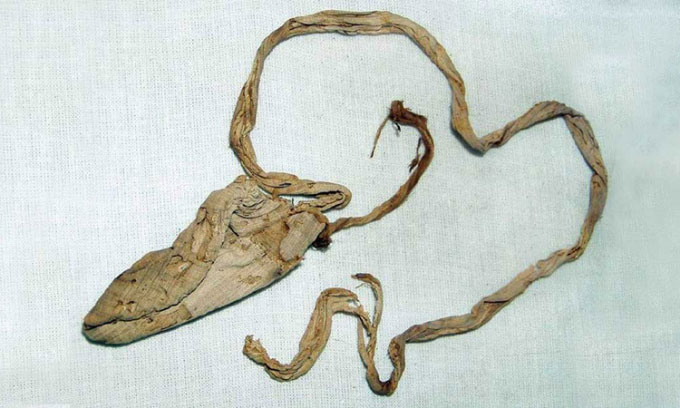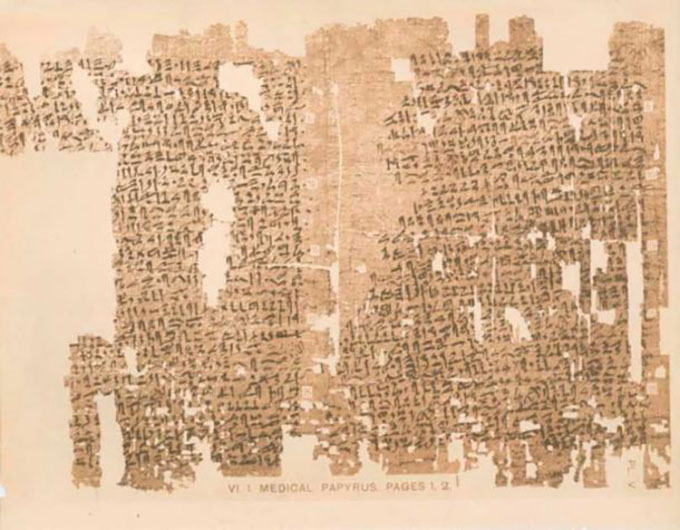One of the unique artifacts found in the tomb of Tutankhamun, excavated in 1922, is a linen condom containing traces of DNA from this pharaoh.

The condom of King Tutankhamun. (Photo: Cairo Museum)
In 1922, when the tomb of Tutankhamun—who ruled Egypt around 1333 – 1323 BC—was first discovered, archaeologist Howard Carter was astonished by the plethora of impressive burial goods. A total of over 5,000 artifacts were left for the young king to use in the afterlife.
Amidst the gold, silver, ebony, ivory artifacts, precious jewelry, weapons, furniture, high-quality linen, and rare perfumes, a peculiar small piece of cloth caught the attention of experts: The condom of King Tutankhamun. It seems to have been considered a necessary item for Tutankhamun in the afterlife, Joanna Gillan, co-founder of the archaeological website Ancient Origins, noted on this site on July 12.
Analysis shows that Tutankhamun’s condom contains traces of the pharaoh’s DNA. It is made from a high-quality linen pouch soaked in olive oil and attached to a string used to tie around the waist. Dated to around 1350 BC, this is the oldest known surviving condom.
If used for contraception rather than ceremonial or disease prevention purposes, it seems it was not very effective, according to Gillan. In fact, experts also found the remains of two fetuses in Tutankhamun’s tomb, and genetic testing indicates that this pharaoh was their biological father.

Page 1 and part of page 2 of the Kahun Medical Papyrus dating back to around 1825 BC. (Photo: Francis Llewellyn Griffith)
Ancient Egyptians also had other contraceptive methods, Gillan stated. The content written on the Kahun Medical Papyrus (also known as the Gynecological Papyrus), dating back to around 1825 BC, suggests the use of a mixture of crocodile dung and some other ingredients. This mixture was then used to create a form of contraceptive device. According to one hypothesis, crocodile dung has alkaline properties and acts as a spermicide.
Egypt may be one of the first civilizations to use condoms, but other civilizations soon followed suit. In ancient Rome, condoms were made from linen and animal bladder or intestines. Ancient China used oiled silk paper. In Japan, ancient people used turtle shells or animal horns. The ancient Djukas tribe in New Guinea had condoms for women made from a type of plant. Meanwhile, Muslims and Jews in the Middle Ages applied tar or soaked the penis in onion juice.
When the first recorded outbreak of syphilis occurred in the 15th century among the French army, the demand for protective measures became more essential, and linen soaked in chemical solutions was widely used. In addition to linen, some Renaissance condoms were also made from animal bladder or intestines. Condoms were revolutionized in the early 19th century with the use of rubber. By 1850, several rubber companies began mass-producing these products.

















































